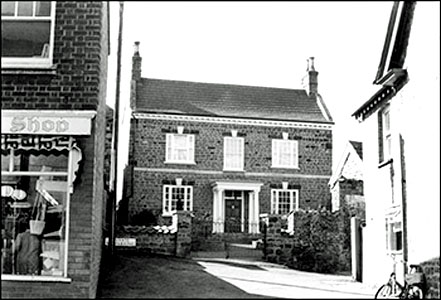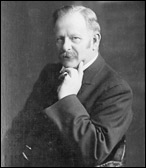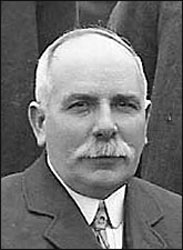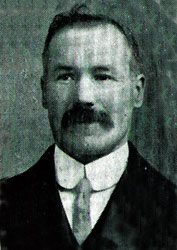The background to passive resistance in Burton Latimer
The 1870 Education Act had been popular with radicals as they were elected by ratepayers in each district. This enabled nonconformists and socialists to obtain control over local schools. In 1902 the Conservative government introduced a new Education Act that abolished all 2568 school boards and handed over their duties to local borough or county councils. These new Local Education Authorities (LEAs) were given powers to establish new secondary and technical schools as well as developing the existing system of elementary schools.
Opposition to the Act came especially from Methodists, Baptists and other nonconformists outraged at support for Anglican and Catholic schools, and angry at losing their powerful role on school boards. The Liberal Party led by Henry Campbell-Bannerman made it a major issue especially in the election of 1906, and the Labour Movement was mostly opposed. Nonconformist opposition was championed by John Clifford. Clifford, who was in Burton Latimer in 1898 to lay one of the memorial stones at the new non-denominational school in the High Street, formed the National Passive Resistance movement, which hoped to convince more nonconformists to resist the Act and stop paying their rates until it was repealed. By 1906, over 170 men had been imprisoned for this refusal, and yet no change to the law was made.
The Burton Latimer resisters
In Burton Latimer, the protests started with a public meeting in the Baptist Assembly Room in November 1902 when the Rev. R.E. Letheren, the Baptist Minister, moved: "That this meeting of Burton Latimer Liberals expresses its detestation of the Education Bill as fatal to the interests of the country and to the Protestant religion." It was seconded by Mr. Charles Barlow. After further discussion, Mr. A. Barratt proposed: "That this meeting agrees to take the names of those persons who are willing to sign to refuse to pay the rate if the Bill becomes law." The serious step they were proposing was pointed out to the meeting and they were advised "to act with their eyes open" and to "look forward to the time when they would have to fight to the bitter end." Subsequently about a dozen signified their willingness to sign.
The "bitter end" did not come for several years and the resisters were summoned to appear in the Magistrates Court twice-yearly to "show cause why they should not pay that portion of the Poor Rate pertaining to educational matters." During one of his first appearances in court, Mr. Charles Barlow (a Parish and District Councillor and County Alderman) said he did not object to the Poor Rate, for he knew too much about it, and for the last 28 or 30 years he had paid that rate as willingly as any one. He objected to that portion set apart for denominational and sectarian teaching. He did not object to the educational rate, but that portion which was taken for sectarian and dogmatic teaching, to which he had been opposed from his boyhood upwards. As long as the Act was in existence he felt that he must adopt that course, otherwise he would feel himself a contemptible coward. (Applause) Several other offenders also addressed the Court. Mr. J. Cooper said he had fought for liberty of conscience for the past 60 years, and he did not mean to turn tail now, even if they sold his last stick. The Bench ordered distress warrants to be issued against them.
 |
|
44 High Street, home of Mr. James Nutt the Poor Rate collector.
Sales of impounded goods took place in front of his house
The edge of his office where he sat to collect rates and
other payments can be seen on the right inside the gate
|
The distress warrants were served by Mr. J.B. Nutt, the Clerk to the Parish Council and Collector of the Poor Rate, who was given the task of visiting the homes of the Resisters and collecting items to the approximate value of the unapaid portion of rate. These items were then taken to Mr. Nutt's residence at 44 High Street and auctioned off in front of his house. The auctioneer was usually Mr. M.C. Wilson of Kettering, who was always sympathetic to the Resisters and "acted gratuitously" according to a Northampton Mercury report in 1905. The normal practice was for the Resisters to bid for their own goods and the aucioneer would stop the auction when the cost of the distraint order had been reached and then the Resister would take the goods home! Many of Burton Latimer's leading inhabitants were involved except, unsuprisingly, those associated with the Parish Church. At the Magistrates Court in September 1905 the following persons were summoned and the amounts claimed were as follows:
| John Henry Ward |
Factory manager |
6d.
|
| William Bates |
Packer |
6d.
|
| John Cooper |
Baker |
2s. 6d.
|
| Charles Barlow C.C. |
Farmer |
£1. 10s.
|
| James Aspin Wallis |
Miller |
2s. 6d.
|
| Edmund Hutchinson |
Farmer |
15s. (whole rate)
|
| Henry Whitney |
Shoe manufacturer |
2s. 6d.
|
| Stephen Mason |
Miller |
1s.
|
| Charles Stokes |
Co-operative Stores manager |
1s.
|
| Alfred Barratt |
Dealer |
2s.
|
| Matthew Jones |
Miller |
1s.
|
| Edward E.G. Larrad |
Clothier's presser |
9d.
|
| Thomas W. Sturman |
Co-operative factory manager |
1s.
|
| Thomas Ambler |
Coal merchant |
2s.
|
| Sumpter Whitney |
Shoe operative |
1s.
|
| Joseph Westley |
Shoe manufacturer |
2s. 6d.
|
| Rev. Isaac Watts |
Baptist minister |
3s. 7d.
|
 |
 |
 |
|
Charles Barlow
|
Charles Stokes
|
John Henry Ward
|
"Damaged teapot"
From the Northampton Mercury 22 September 1905:
PASSIVE RESISTANCE SALE
Mr. M.C. Wilson, auctioneer, Kettering, conducted a sale of the goods seized from passive resisters of Burton Latimer, at that parish on Tuesday afternoon. Beyond the Rev. Isaac Watts and half-a-dozen of the "stalwarts," there was only a small attendance of the public. One lady bemoaned the fact that her teapot had been dented, but expressed her intention of setting store by it and handing it down to future generations that it could tell its own tale of the religious persecution. The sale only lasted a very few minutes, all the articles being bought in.
The 1906 Election
As can be seen above, the Act developed into a major political issue which, together with the threat posed by tariff reform on food prices, contributed significantly to the Liberal Party defeating the Conservatives in the General Election in 1906. The Liberals made a major effort in 1906 to pass the Birrell Educational Bill; it would have ended public support of religious schools. It passed the Commons but was blocked by the House of Lords.
In March 1906, two months after the election, the Northampton Mercury reported the Rev. Isaac Watts reiterating that the Burton resisters were determined not to voluntarily pay the rate until far-reaching amendments had been made in the Acts which violated the Nonconformist conscience. Once again, in September 1907, Charles Barlow, Stephen Mason, James A Wallis and Charles Stokes were summoned "for non-payment of a portion of the Poor Rate and the usual orders were made."
This is the last report found regarding Burton Latimer resisters but twenty years later, in 1926, some resisters in Cheltenham were fined for the forty-seventh time. |